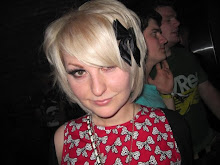Dubstep, techno and drum and bass technicians will at some point want a heavy Reese bass for there new dance floor track. The Reese bass is the classic 'dirty bass' sound. From the deeper terrorist Reese to the intense alien girl Reese they all have one thing in common. The saw tooth wave.
Firstly, get a multi oscillator synth (ideally 3 or 4 oscillators) for example the native massive, ES2 by Logic or reasons maelstrom. You will want to set the first oscillator and all the other oscillators to the saw tooth wave form. There are many harmonic frequencies in the saw tooth, The normal waves ramps upward and then drops sharply. There are also sawtooth waves where the wave ramps down and then rises sharply. That kind of sawtooth wave is called a 'reverse sawtooth' or 'inverse sawtooth'. As signals, the two variations of the sawtooth sound the same until paired together.
After you have got your synth running with 3 oscillators, it's time to detune them by around +/- 25cents, this is very effective for drum and bass and dubstep. This gives the Reese a very dark edgy sound, rather than just a buzzy electro kind of sound.
Once you have got your detuned saw tooth, (this is essentially the basis of the Reese) - You can go ahead and start twisting and shaping the sound for your specific genre, dubstep or drum and bass. Here are some of the main parameters you can use:
ASDR on the filter
A interesting method to get a movement on the Reese bass is to add filtering triggered by an envelope, Reese bass patches are very sensitive to filters and utilizing a high pass filter you can get a very driven sounding lead, or use a low pass and get a very nice bass. try using about 20% of filter attack for dubstep and 30% for jungle.
Phaser
Because of the harmonic phases all ready occurring due to the multiple oscillation, adding a phase plug in can and does work very well. It's better to use a sparse amount of phase to subtly enhance the sound rather than extreme amounts
Flanger
The flange process can add a nice bit of subtle metallic rasp to the sound, this helps gives you a big bad dubstep sound.
Delay
The delay effect can make a Reese sound wicked! Pre drop delayed Reese bass can add a very tense build up.
Reverb
Again subtle uses of reverb can act very effectively on your sound, Guitar amp reverbs tend to work well with Reese bass and also come packed with distortion for extra bite.
Other effects that enhances your Reece include: Distortion, compression, LFO, unison and analogue knobs (like on the ES2 and massive) and auto filters work especially well with dubstep.
In summary, it is best to process your Reese line a lot for dubstep and drum and bass music production. It's a well used if not over used sound, so to make it stand out you will have to be creative with your sound programming skills - Filters act in the most effective way and reverb is king!
Friday, 4 December 2009
How to create dubstep using a Reese bass and oscillator. Benga, Skream and Rusko.
Labels:
benga,
dubstep,
loefah,
make music,
oscillator,
reese,
rusko,
skream
Subscribe to:
Post Comments (Atom)

No comments:
Post a Comment